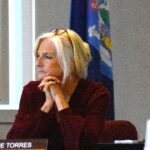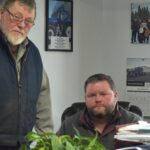This year genealogists will have something extra to be thankful for on Thanksgiving Day. In April 2022, the 1950 U.S. Census will be released by the National Archives and Records Administration.
Many genealogists have been waiting for this for a while now as they trace their families through time. The 1950 census was taken post World War II and will begin recording the postwar baby boom. Many of us will show up enumerated for the first time making our debuts so to speak.
There are three parts to the 1950 census, the population census, the Indian Reservation Schedule of Natives living on reservations, and population forms for Canton, Johnston, Midway and Wake Islands. Included in the population census was the continental United States, the territories of Alaska, Hawaii, American Samoa, Guam, Panama Canal Zone, Puerto Rico and the U.S. Virgin Islands.
Unfortunately, it is unlikely that the release will be indexed. There is some talk of using a preliminary name index using handwriting recognition software to create a name search, and I’m sure all of us who have ever used records indexed in that manner know how faulty the process can be. So be prepared to search discrete areas, especially in large cities. Small towns will be easier to search. In large cities such as Chicago, knowing the street address of the family you’re researching will make things easier. Remember, the census takers worked in enumeration districts.
If you’re not sure what enumeration district your family may have been in, try going to Stephen Morse’s website for some of the records that can help. The one-step website is easy to use and it’s free. You’ll find it by going to https://stevemorse.org/census/unified.html. You can also go through your family information looking for sources such as the 1940 census provided the family didn’t move, vital records certificates, city directories, Social Security applications, draft records and information from relatives.
Preparation work before the census is released will make your researching easier. If you worked with the 1940 census when it was first released, you know it was difficult to find some people (I’m still missing an uncle). The early work you do will make the search less frustrating and more profitable.
NARA staff member Clair Kluskens writes a blog with detailed information on the census and updated new information. It’s well worth seeking this out, and you can also explore the NARA website while you are there. There’s a page devoted to genealogists. You can find the blog at https://historyhub.history.gov/community/genealogy/Census-records/blog. There’s also a website at https://www.census.gov/history/www/through-the-decades/overview/1950.html.
The blog and the website may seem like large mouthfuls of names, periods and slash marks, but it will be a great help in familiarizing yourself with what to expect when working with the actual documents. You can also try googling what you’re looking for.
So enjoy the turkey, dressing, cranberry sauce and pumpkin pie, and look forward to April 2022 and the release of a major new tool in our research.
Columnist Nancy Battick of Dover-Foxcroft has researched genealogy for over 30 years. She is past president of the Maine Genealogical Society, author of several genealogical articles and co-transcribed the Vital Records of Dover-Foxcroft. Nancy holds an MA in History from UM and lives in DF with her husband, Jack, another avid genealogist. Reader emails are welcome at nbattick@roadrunner.com.







